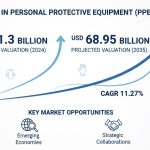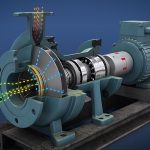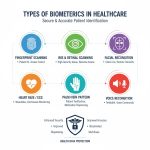Synthetic and Bio-based Polypropylene Market: A Comprehensive Analysis
Overview of Synthetic and Bio-based Polypropylene Industry
The synthetic and bio-based polypropylene market represents a dynamic segment within the global plastics industry, encompassing both traditional petroleum-derived polypropylene and innovative bio-based alternatives. Polypropylene, known for its versatility, durability, and cost-effectiveness, serves as a fundamental material across numerous industries including packaging, automotive, construction, and consumer goods. The market is experiencing significant transformation driven by increasing environmental consciousness, stringent regulatory frameworks promoting sustainable materials, and technological advancements in bio-based polymer production. Growing demand for lightweight materials in automotive applications, coupled with the expanding packaging industry in emerging economies, continues to fuel market growth. Additionally, the shift towards circular economy principles and corporate sustainability commitments are accelerating the adoption of bio-based polypropylene alternatives, creating new opportunities for market expansion and innovation.
According to analysts at Vantage Market Research, the global Synthetic and Bio-based Polypropylene Market is valued at USD 109.7 Billion in 2024 and is projected to reach a value of USD 240.7 Billion by 2035 at a CAGR (Compound Annual Growth Rate) of 7.4% between 2025 and 2035.
Get a Sample Copy:- https://www.vantagemarketresearch.com/synthetic-and-biobased-polypropylene-market-4239/request-sample
Top 7 Key Players
- Braskem, Dow Inc.
- Borealis AG
- LyondellBasell Industries
- TotalEnergies
- NatureWorks LLC
- Novamont S.p.A.
- Corbion N.V.
Market Dynamics
The synthetic and bio-based polypropylene market dynamics are shaped by a complex interplay of factors influencing supply, demand, and technological evolution. Traditional synthetic polypropylene maintains its dominant position due to established production infrastructure, cost advantages, and consistent material properties that meet diverse application requirements. However, the bio-based segment is gaining momentum as manufacturers invest in renewable feedstock technologies and production capacity expansion. Raw material price volatility, particularly crude oil fluctuations for synthetic variants and agricultural feedstock costs for bio-based alternatives, significantly impacts market dynamics. Consumer preference shifts towards sustainable products are compelling manufacturers to diversify their portfolios, incorporating bio-based options alongside conventional offerings. The competitive landscape is evolving as chemical giants collaborate with biotechnology firms to develop commercially viable bio-based polypropylene solutions. Market dynamics are further influenced by regional manufacturing capabilities, trade policies, and the development of recycling infrastructure that supports both synthetic and bio-based polypropylene waste management.
Key Segment Covered
Type
- Synthetic Polypropylene
- Homopolymer Polypropylene
- Copolymer Polypropylene
- Random Copolymer
- Block Copolymer
- Bio-based Polypropylene
- 100% Bio-based Polypropylene
- Partially Bio-based Polypropylene
Application
- Injection Molding
- Textile
- Films
- Others
End Use
- Packaging Industry
- Automotive Industry
- Textile Industry
- Electronics & Electrical Industry
- Healthcare Industry
- Construction Industry
- Agriculture Industry
- Others
Top Trends
Several transformative trends are reshaping the synthetic and bio-based polypropylene market landscape. The integration of advanced catalyst technologies is enabling the production of polypropylene with enhanced properties, including improved clarity, higher impact resistance, and better processability. Manufacturers are increasingly adopting mass balance approaches, blending bio-based feedstocks with conventional materials to create products with reduced carbon footprints while maintaining performance standards. The development of chemical recycling technologies specifically designed for polypropylene waste is creating new pathways for circular economy implementation. Innovation in bio-based feedstock sources, including agricultural waste, algae, and carbon capture utilization, is expanding the raw material base for sustainable polypropylene production. Digital transformation initiatives, including artificial intelligence and machine learning applications in production optimization and quality control, are improving efficiency and reducing waste. The trend towards lightweighting in automotive and packaging applications continues to drive demand for high-performance polypropylene grades with superior strength-to-weight ratios.
Top Report Findings
- The global synthetic and bio-based polypropylene market is projected to reach USD 7 Billion by 2035, growing at a CAGR of 7.4% from 2025 to 2035.
- Bio-based polypropylene segment is expected to witness the highest growth rate of 12.4% during the forecast period.
- Asia-Pacific region dominates the market with over 45% share, driven by robust manufacturing sectors in China, India, and Southeast Asian countries.
- Packaging applications account for approximately 35% of total polypropylene consumption globally.
- Automotive industry represents the second-largest application segment with 23% market share.
- Investment in bio-based polypropylene production capacity exceeded USD 2.3 billion in 2023.
- Recycled polypropylene content in new products increased by 18% compared to previous year.
- Strategic partnerships between petrochemical companies and biotechnology firms increased by 40% in the last two years.
Challenges
The synthetic and bio-based polypropylene market faces several significant challenges that impact growth and development. Production costs for bio-based polypropylene remain substantially higher than conventional alternatives, limiting widespread adoption despite environmental benefits. Technical challenges in achieving consistent quality and performance characteristics in bio-based variants pose obstacles for applications requiring precise material specifications. Infrastructure limitations for collecting, sorting, and processing polypropylene waste hinder the development of effective recycling systems. Regulatory inconsistencies across regions create complexity for manufacturers operating in multiple markets, particularly regarding bio-based content certification and sustainability claims. Competition from alternative materials, including polyethylene and emerging bioplastics, intensifies market pressure. The dependence on agricultural feedstocks for bio-based production raises concerns about land use, food security, and supply chain stability during climate-related disruptions.
Opportunities
The evolving market landscape presents numerous opportunities for growth and innovation in the synthetic and bio-based polypropylene sector. Increasing government support through subsidies, tax incentives, and mandates for sustainable materials creates favorable conditions for bio-based polypropylene market expansion. Technological breakthroughs in fermentation processes and genetic engineering offer pathways to reduce production costs and improve bio-based polypropylene properties. The growing electric vehicle market presents opportunities for lightweight, high-performance polypropylene applications in battery components and interior parts. Emerging markets in Africa and Southeast Asia offer untapped potential for market expansion as industrialization and urbanization drive demand for plastic products. Development of advanced recycling technologies, including chemical recycling and dissolution processes, opens new avenues for creating high-quality recycled polypropylene suitable for demanding applications. Collaboration opportunities between brand owners, converters, and material suppliers to develop sustainable packaging solutions are increasing, driven by consumer demand and regulatory pressure.
Key Questions Answered in the Report
- What are the primary factors driving the growth of the synthetic and bio-based polypropylene market?
- How do production costs compare between synthetic and bio-based polypropylene variants?
- Which application segments offer the highest growth potential for bio-based polypropylene?
- What technological innovations are expected to impact market development in the next five years?
- How are regulatory frameworks evolving to support sustainable polypropylene alternatives?
- What role does recycling infrastructure play in shaping market dynamics?
- Which regional markets present the most attractive investment opportunities?
- How are major market players positioning themselves to capitalize on the bio-based trend?
Regional Analysis
The synthetic and bio-based polypropylene market exhibits distinct regional characteristics shaped by industrial development, regulatory environments, and sustainability priorities. North America demonstrates strong growth in bio-based polypropylene adoption, supported by advanced biotechnology infrastructure and corporate sustainability commitments, with the United States leading innovation in renewable feedstock development. Europe maintains its position as a regulatory pioneer, implementing stringent plastic waste management directives and circular economy policies that accelerate bio-based material adoption, particularly in Germany, France, and the Netherlands. Asia Pacific dominates global production capacity for synthetic polypropylene, with China, India, and Japan representing major manufacturing hubs, while simultaneously emerging as a significant market for bio-based alternatives driven by environmental concerns and government initiatives. Latin America leverages its agricultural resources to develop bio-based feedstock supply chains, with Brazil and Mexico showing promising growth in sustainable polypropylene production. Middle East & Africa region, traditionally focused on petroleum-based production due to abundant oil resources, is gradually diversifying into bio-based segments as part of economic transformation strategies, with the UAE and Saudi Arabia investing in sustainable polymer technologies.
![[Market Research Reports] – Research Google News Blog | VMR.Biz](https://www.vmr.biz/wp-content/uploads/2022/12/logo-removebg-preview.png)











